The 1923-S Buffalo Nickel value ranges from approximately $7 for coins in good condition to over $27,000 for high-grade uncirculated specimens. Condition is the primary value determinant: Good to Very Good grades fetch $7-$55, Extremely Fine examples around $300, About Uncirculated (AU) pieces range from $320-$609, while Uncirculated MS-66 specimens can command $27,995-$32,000. Weak strikes are common in this series, making well-struck examples and uncirculated coins significantly more valuable. With over 40 million produced, finding quality specimens requires careful examination of strike details and overall preservation.
That worn Buffalo Nickel from 1923 sitting in your drawer might be worth more than spare change. While common circulation finds typically bring $7 to $55, well-preserved examples command serious premiums—a 1923-S specimen in MS-66 condition sold for $32,000 at Heritage Auctions. The value gap between worn and pristine examples reveals why understanding grade differences and mint marks matters for this nearly century-old five-cent piece.
Understanding the 1923 Buffalo Nickel Production
The Philadelphia and San Francisco mints produced Buffalo Nickels in 1923, with dramatically different mintage numbers that directly impact today’s values. Philadelphia struck 35,715,000 pieces without a mint mark, flooding circulation with enough examples that survivors remain relatively common. San Francisco’s production totaled just 6,142,000 coins—marked with an “S” below the denomination on the reverse—creating immediate scarcity that collectors recognize with higher premiums.
Both facilities faced ongoing challenges with the Buffalo Nickel design. James Earle Fraser’s intricate composition, featuring a Native American profile on the obverse and an American bison on the reverse, placed the highest design elements directly in wear’s path. The date on the obverse and the denomination “FIVE CENTS” on a raised mound wore down faster than other design features, making sharp strikes valuable and weak strikes frustratingly common among surviving examples.
1923 Philadelphia Mint Buffalo Nickel Values
Philadelphia-minted examples without mint marks represent the majority of 1923 Buffalo Nickels collectors encounter. Their substantial mintage created enough survivors that circulated examples trade at modest premiums over melt value, though uncirculated pieces tell a different story.
1923 No Mint Mark Value Chart:
| Grade | Price Range |
|---|---|
| Good (G-4) | $1.50 – $3 |
| Fine (F-12) | $4 – $6 |
| Very Fine (VF-20) | $8 – $12 |
| Extremely Fine (EF-40) | $18 – $35 |
| About Uncirculated (AU-50) | $45 – $75 |
| Mint State (MS-60) | $85 – $150 |
| Mint State (MS-63) | $175 – $350 |
| Mint State (MS-65) | $650 – $1,200 |
A well-struck 1923 Philadelphia specimen in MS-65 condition sold for $1,116 through Stack’s Bowers in January 2023. The quality difference matters tremendously—coins showing full horn detail on the bison and complete feather definition command premiums over weakly struck examples in identical numerical grades. Professional grading services like PCGS and NGC note strike quality on their certification labels, with designations like “Full Strike” adding 30-50% to base values.
The rarity pyramid narrows sharply above MS-65. PCGS has certified only 47 examples in MS-66 condition as of late 2023, with zero coins grading higher. This population scarcity explains why MS-66 specimens bring $3,500 to $5,000 at auction—more than triple the MS-65 price despite just one grade point difference.
1923-S Buffalo Nickel Premium Values
San Francisco’s lower mintage created immediate scarcity that persists a century later. The 1923-S represents one of the semi-key dates in the Buffalo Nickel series, commanding significant premiums across all grade levels compared to Philadelphia counterparts.
1923-S Mint Mark Value Chart:
| Grade | Price Range |
|---|---|
| Good (G-4) | $7 – $10 |
| Fine (F-12) | $22 – $35 |
| Very Fine (VF-20) | $40 – $55 |
| Extremely Fine (EF-40) | $120 – $200 |
| About Uncirculated (AU-50) | $320 – $425 |
| About Uncirculated (AU-58) | $490 – $609 |
| Mint State (MS-60) | $750 – $950 |
| Mint State (MS-63) | $1,400 – $2,200 |
| Mint State (MS-65) | $8,500 – $12,000 |
| Mint State (MS-66) | $27,995 – $32,000 |
The dramatic jump between AU-58 and MS-60 grades reflects the collector premium for uncirculated status. A coin showing even slight friction on the high points drops from four-figure mint state pricing to three-figure about uncirculated values. This $300+ difference on a grade-point boundary makes authentication critical for coins near the uncirculated threshold.
San Francisco production quality varied noticeably in 1923. Many survivors show weakness in the bison’s shoulder detail and flattened horn definition from worn dies or insufficient striking pressure. Full-detail examples grading MS-63 or higher sell for 40-60% premiums over weakly struck coins in identical grades. A sharply struck 1923-S in MS-64 condition brought $4,560 at Heritage Auctions in March 2023, while a weakly struck example sold for $2,880 the same month.
Significant Errors and Varieties Worth Tracking
Buffalo Nickels from 1923 occasionally display minting errors that add collector interest and value premiums. Unlike some years with major die varieties, 1923 errors primarily involve striking and planchet issues rather than dramatic doubled dies or repunched mint marks.
Lamination Errors: Metal separation on the planchet surface creates raised or peeling areas. A 1923 Philadelphia example with prominent lamination across the obverse sold for $215 in VF condition—roughly seven times the standard value for that grade. Laminations affecting key design elements like the date or bison command higher premiums than edge flaking.
Off-Center Strikes: Coins struck with the planchet misaligned from the dies show partial designs with blank crescents. Value depends on the offset percentage and whether the date remains visible. A 1923-S struck 10% off-center with a full date brought $385 in F-12 condition, while a 25% off-center example without a visible date sold for just $95 despite better detail in the struck portions.
Die Cracks and Cuds: Raised lines from broken dies appear on some 1923 examples. Minor cracks add modest premiums of 10-20%, but major die breaks creating raised “cuds” where metal flows into the broken area command stronger collector interest. A 1923 Philadelphia piece with a prominent cud at the rim above the date sold for $165 in VG condition through Great Collections.
Wrong Planchet Errors: Extremely rare 1923 nickels struck on dime or cent planchets exist in institutional collections but rarely appear in public auctions. When they do surface, prices reach several thousand dollars regardless of wear. No verified examples have sold publicly since a 1923 struck on a cent planchet brought $6,325 in 2018.
Authentication and Grading Considerations
The value spreads documented above make professional grading essential for 1923 Buffalo Nickels worth more than $100. Third-party certification from PCGS or NGC costs $20-40 per coin but adds credibility that typically increases sale prices by more than the grading fees for higher-value pieces.
Counterfeit 1923-S nickels exist, typically created by adding “S” mint marks to genuine Philadelphia coins. Authentic “S” mint marks appear small and precisely positioned below “FIVE CENTS” with consistent depth. Added mint marks often show incorrect size, positioning slightly left or right of center, or different metal flow patterns under magnification. The density of genuine nickel composition (75% copper, 25% nickel) creates a specific weight of 5.00 grams that altered coins may not match exactly.
Strike quality assessment requires examining specific design elements. Full horn detail on the bison shows sharp separation between horn ridges rather than mushy blending. The Native American’s hair braid should display individual strand definition, not soft flowing lines. Feather details in the headdress should show clear separation and sharp edges. PCGS and NGC designate exceptional strikes with plus (+) grades or special labels that justify 20-40% premiums over standard examples.
Cleaning damage destroys collector value regardless of pre-cleaning grade. Even light polishing to “improve” appearance creates microscopic hairlines visible under magnification that professional graders immediately identify. A cleaned 1923-S that might grade MS-63 without alteration receives “Details—Cleaned” designation and sells for AU-50 money or less. Never attempt cleaning—natural toning and original surfaces preserve maximum value.
Building a 1923 Buffalo Nickel Collection Strategy
Collectors approach 1923 Buffalo Nickels with different strategies based on budget and goals. Type collectors seeking one example to represent the series typically purchase Philadelphia mint coins in VF-EF condition for $8-35, securing an attractive representative without premium San Francisco pricing.
Date collectors building complete Buffalo Nickel sets face a decision point with the 1923-S. Lower-grade examples from Good through Very Fine cost $7-55, making set completion accessible. However, the dramatic value increase for higher grades means many collectors compromise at Fine or Very Fine condition to balance appearance with affordability, upgrading to Extremely Fine or better only when budgets allow.
Investors targeting appreciation potential focus on high-grade examples in MS-64 or better condition. The 1923-S in MS-65 or MS-66 represents genuine scarcity—PCGS population reports show just 83 combined examples in these two grades. This verified rarity provides downside protection even during market corrections, while the coins’ visual appeal attracts strong bidding when premium examples reach auction.
Budget allocation matters when building positions in 1923 Buffalo Nickels. Five 1923-S coins in VF-20 condition cost approximately $250 total but offer limited appreciation leverage with their thousands of surviving counterparts. That same $250 invested in one sharply struck AU-58 specimen provides exposure to a genuinely scarce coin with greater upside potential as fewer collectors can afford the MS-grade premium jump.
Selling Your 1923 Buffalo Nickels for Maximum Return
Timing and venue selection significantly impact realized prices when selling 1923 Buffalo Nickels. Common-date circulated examples under $50 sell efficiently through local coin shops at 70-80% of wholesale guide prices, providing immediate payment without shipping costs or auction fees. Higher-value pieces deserve different approaches.
For 1923-S examples grading Extremely Fine or better, consignment to major auction houses like Heritage, Stack’s Bowers, or Legend typically maximizes returns. Auction fees of 10-20% seem substantial but access to serious collectors worldwide generates competitive bidding that often exceeds private sale offers by more than the commission difference. A 1923-S in MS-64 might bring $2,800 in a major auction after fees versus $2,400 in a direct sale to a dealer.
Online marketplaces like eBay work for mid-range coins from $100-500, though success requires high-quality photographs showing design details clearly and honest grading descriptions. Overgraded listings damage seller reputation and generate returns. Professional certification solves this issue—PCGS or NGC slabs provide grading credibility that commands price premiums over raw coins and reduces buyer hesitation.
Patience pays when selling premium examples. Rushing to accept the first offer typically leaves money on the table. Quality 1923-S Buffalo Nickels in MS-65 or better grades appear infrequently enough that waiting for the right buyer—perhaps through auction exposure to thousands of potential bidders—often generates hundreds or thousands more than quick dealer sales. The $32,000 MS-66 sale mentioned earlier resulted from competitive bidding between multiple serious collectors, not a hurried transaction.
Where to Find 1923 Buffalo Nickels Today
Most 1923 Buffalo Nickels enter the market through estate dispersals rather than active circulation finds. The last examples disappeared from pocket change in the 1960s, making coin shows, online dealers, and auctions the primary acquisition sources today.
Local coin shows offer hands-on examination before purchasing—crucial for evaluating strike quality and surface preservation that photographs don’t always reveal clearly. Dealers at shows typically stock circulated examples from Good through Extremely Fine at prices near wholesale guides, with room for negotiation on multiple-coin purchases. Shows also provide networking opportunities with other collectors who may have duplicates available for trade.
Online dealers like APMEX, JM Bullion, and Coinstore maintain substantial inventories with photographs and certification details. Prices generally track published guides closely, though sales and specials occasionally create opportunities below typical retail. The tradeoff involves buying sight-unseen beyond photographs, accepting whatever the certification service graded without personal examination before purchase.
Auction platforms provide access to the finest specimens. Heritage Auctions, Stack’s Bowers, and Great Collections regularly feature 1923-S Buffalo Nickels in MS grades that rarely appear elsewhere. Auction formats create transparency—completed sale prices for similar coins provide reliable value benchmarks, and bidding competition ensures prices reflect current market demand rather than arbitrary asking prices.
Protecting Your Investment in 1923 Buffalo Nickels
Proper storage preserves the grade and value you’ve purchased. Certified coins in PCGS or NGC holders need minimal additional protection beyond basic handling care—hold slabs by edges, never touching the surface, and store upright in boxes designed for certified coins. The sonically sealed holders provide excellent long-term protection against environmental damage.
Raw uncertified coins require more careful storage. Individual 2×2 cardboard holders with Mylar windows protect surfaces while allowing viewing, but avoid holders with PVC plastic that off-gases damaging chemicals. Archival-quality holders made from Mylar or similar inert materials cost more but prevent chemical damage over decades. Store holders in dry environments with stable temperatures—humidity and temperature swings accelerate toning and potential corrosion.
Insurance coverage makes sense for collections exceeding $5,000 in value. Homeowner’s policies typically cap coin coverage at $1,000-2,000 without specific riders. Collectibles insurance through companies like Hugh Wood Inc. or American Collectors Insurance provides agreed-value coverage with premiums around $10-15 per $1,000 of coverage annually. Maintain current appraisals and photographed inventory to support claims if necessary.
Document your collection with photographs and purchase records. Certified coin populations change as new examples enter professional grading services, but your documentation proves ownership and provenance. This record-keeping aids insurance claims, estate planning, and eventual sale by providing clear ownership history and value documentation for heirs or buyers.
You may be interested:
- 1859 Indian Head Penny Coin Value Complete Errors List And No Mint Mark Worth Guide For Collectors
- 1911 V Nickel Coin Value Guide Complete Errors List And No Mint Mark Worth Today
- 1902 Dime Coin Value Complete Errors List With O S And No Mint Mark Worth Guide
- 1788 Quarter Coin Value Complete Guide Errors List And D S P Mint Mark Worth Revealed
- 1776 To 1976 Bicentennial Half Dollar Coin Value Complete Errors List And What Your D S And No Mint Mark Coins Are Actually Worth
- 1990 Penny Coin Value Errors List How D S And No Mint Mark Pennies Are Worth Thousands Of Dollars

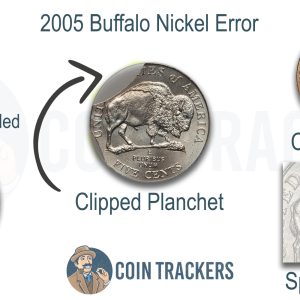
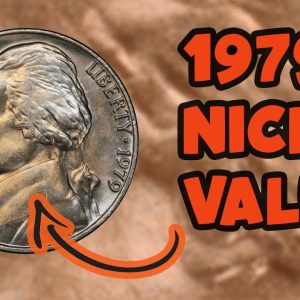
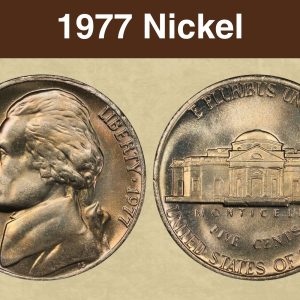
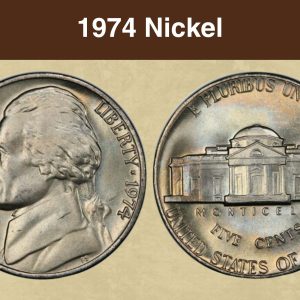
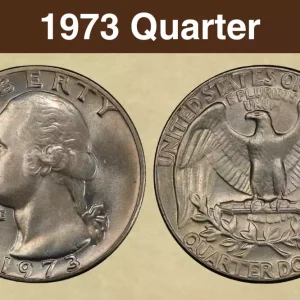
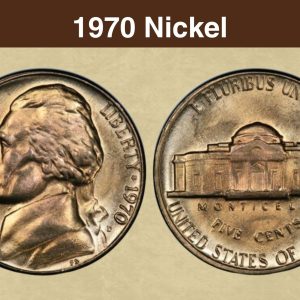
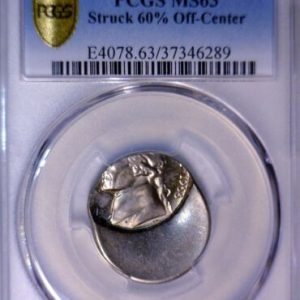
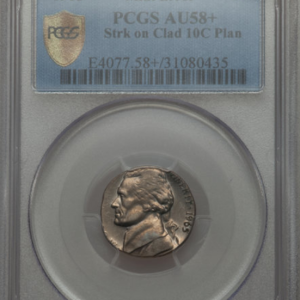
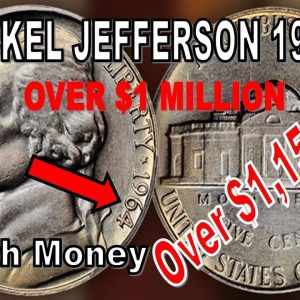
How much is a 1923 S Buffalo Nickel worth?
A 1923-S Buffalo nickel’s value ranges from about $7 for a coin in good condition to over $27,000 for a high-grade, uncirculated specimen, with price largely determined by the coin’s condition. Coins with weak strikes are common due to the nature of the series, so well-struck examples and those in uncirculated condition are worth significantly more.
What is the most sought after buffalo nickel?
The rarest Buffalo nickel is the 1926-S, which has the lowest mintage of the series at just 970,000 coins. Other very rare Buffalo nickels include the 1937-D “Three-Legged” variety, caused by a die polishing error, and high-grade specimens of other key dates like the 1918-D overdate and 1924-S.
What is the difference between type 1 and type 2 1913 buffalo nickel?
The main difference between the 1913 Buffalo nickel Type 1 and Type 2 is the design of the bison’s mound on the reverse side. The Type 1 has a raised mound, which caused the “FIVE CENTS” inscription to wear off quickly. The Type 2 redesign moved the inscription to a recessed area below a straight line, protecting it from wear.
Where is the mint mark on a 1923 buffalo nickel?
On a 1923 Buffalo Nickel, the mint mark (if present) is on the reverse (back) side of the coin, located below the words “FIVE CENTS”. Coins from the Philadelphia mint in 1923 will have no mint mark, while those from San Francisco will have an “S”, and those from Denver will have a “D”.